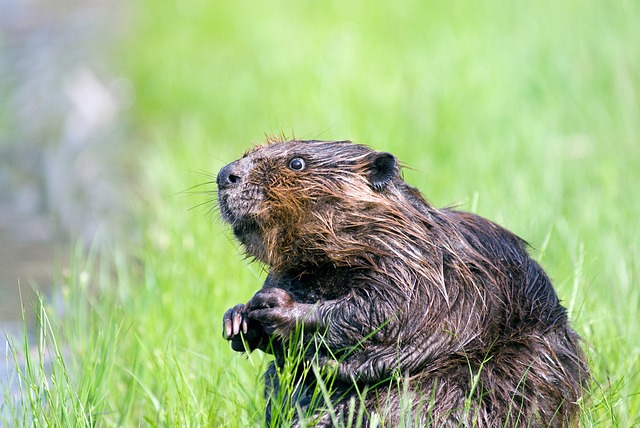Beavers are fascinating creatures known for their ability to build dams and create wetlands. However, many people are unaware of the sounds that beavers make.
Beavers are not known for being vocal animals, but they communicate with each other through various sounds.
One of the most common sounds that beavers make is a loud slap of their tail on the water.
This sound is a warning signal to alert other beavers of danger. When a beaver slaps its tail on the water, it creates a loud noise that can be heard from a distance.
This sound warns other beavers to dive underwater and seek shelter until the danger has passed.
In addition to this warning sound, beavers also make various other noises that are used to communicate with each other.
Beaver Communication
Beavers are social animals that use a variety of sounds and body language to communicate with each other. Here are some of the ways that beavers communicate:
Vocalizations
Beavers use a range of vocalizations to communicate with each other. These include:
- Whining: A high-pitched sound that beavers make when they are distressed or need attention.
- Growling: A low-pitched sound that beavers make when angry or threatened.
- Grunting: A short, sharp sound that beavers make to signal danger or alert other beavers to their presence.
Tail Slapping
Beavers also use their tails to communicate. When a beaver slaps its tail on the water, it creates a loud noise that can be heard by other beavers up to 100 meters away. This tail slapping is used to signal danger or to warn other beavers of a predator.
In addition to vocalizations and tail slapping, beavers also use scent markings to communicate. They use scent glands near their anus to mark their territory and communicate with other beavers.
Overall, beavers use a variety of sounds and body language to communicate with each other. These communication methods can help us better understand these fascinating animals and their social dynamics.
Beaver Habitat and Behavior
Beavers are semi-aquatic rodents found in North America, Europe, and Asia. They are known for their ability to build dams and lodges, which are essential to their survival. Beavers are primarily nocturnal and are most active during the night.
Beaver Dams and Lodges
Beavers are known for their ability to build dams and lodges, which are essential to their survival. Dams are built to create ponds and to control the flow of water.
Lodges are built in the middle of ponds and are used as a shelter during the winter months. Beavers build their dams and lodges using branches, mud, and other natural materials.
Beaver Family Life
Beavers are social animals and live in family groups called colonies. A typical colony consists of a breeding pair, their offspring, and sometimes a few non-breeding adults. The breeding pair is usually monogamous and stays together for life.
Beavers are known for their strong family bonds and are often seen grooming each other and playing together.
Beavers communicate with each other using a variety of sounds.
They use vocalizations such as grunts, whines, and barks to communicate. They also slap their tails on the water to warn other beavers of danger. These warning slaps can be heard from a great distance and are essential to beaver communication.
In summary, beavers are semi-aquatic rodents that are known for their ability to build dams and lodges. They are social animals that live in family groups called colonies. Beavers communicate with each other using a variety of sounds, including vocalizations and tail slap.
Beaver Sounds
Beavers are known for their ability to build dams and lodges, but they also communicate with each other through a variety of sounds. This section will explore the different types of beaver sounds and what they mean.
Types of Beaver Sounds
Beavers make various sounds, from grunts and growls to whistles and squeaks. Some of the most common beaver sounds include:
- Tail Slaps: Beavers slap their tails on the water to warn other beavers of danger. This sound can be heard from a distance and is often used to communicate with other beavers.
- Whistles: Beavers will whistle to communicate with each other. This sound often signals that it’s time to start working on the dam or lodge.
- Grunts and Growls: Beavers will make grunting and growling sounds when agitated or upset. This sound is often heard during territorial disputes or when a beaver is defending its territory.
- Chewing Sounds: Beavers are known for their ability to chew through trees and branches. This sound can be heard when beavers work on their dams or lodges.
What Do Beaver Sounds Mean?
Beavers use sounds to communicate with each other and to warn of danger. For example, tail slaps often alert other beavers of predators or threats, while whistles signal that it’s time to start working.
Grunts and growls are often used during territorial disputes, and chewing sounds signify that beavers are working hard building their dams and lodges.
Overall, beavers are highly social animals that rely on communication to survive. By understanding the different types of beaver sounds, we can better understand these fascinating creatures and their behavior.




